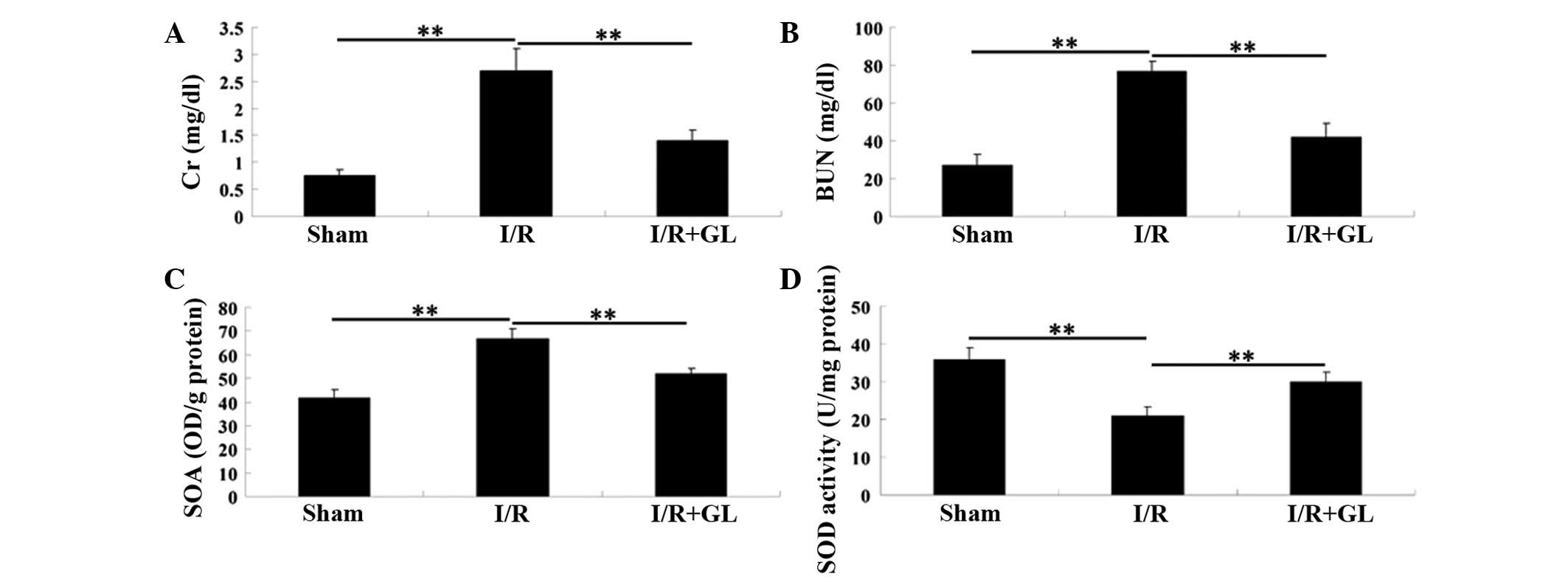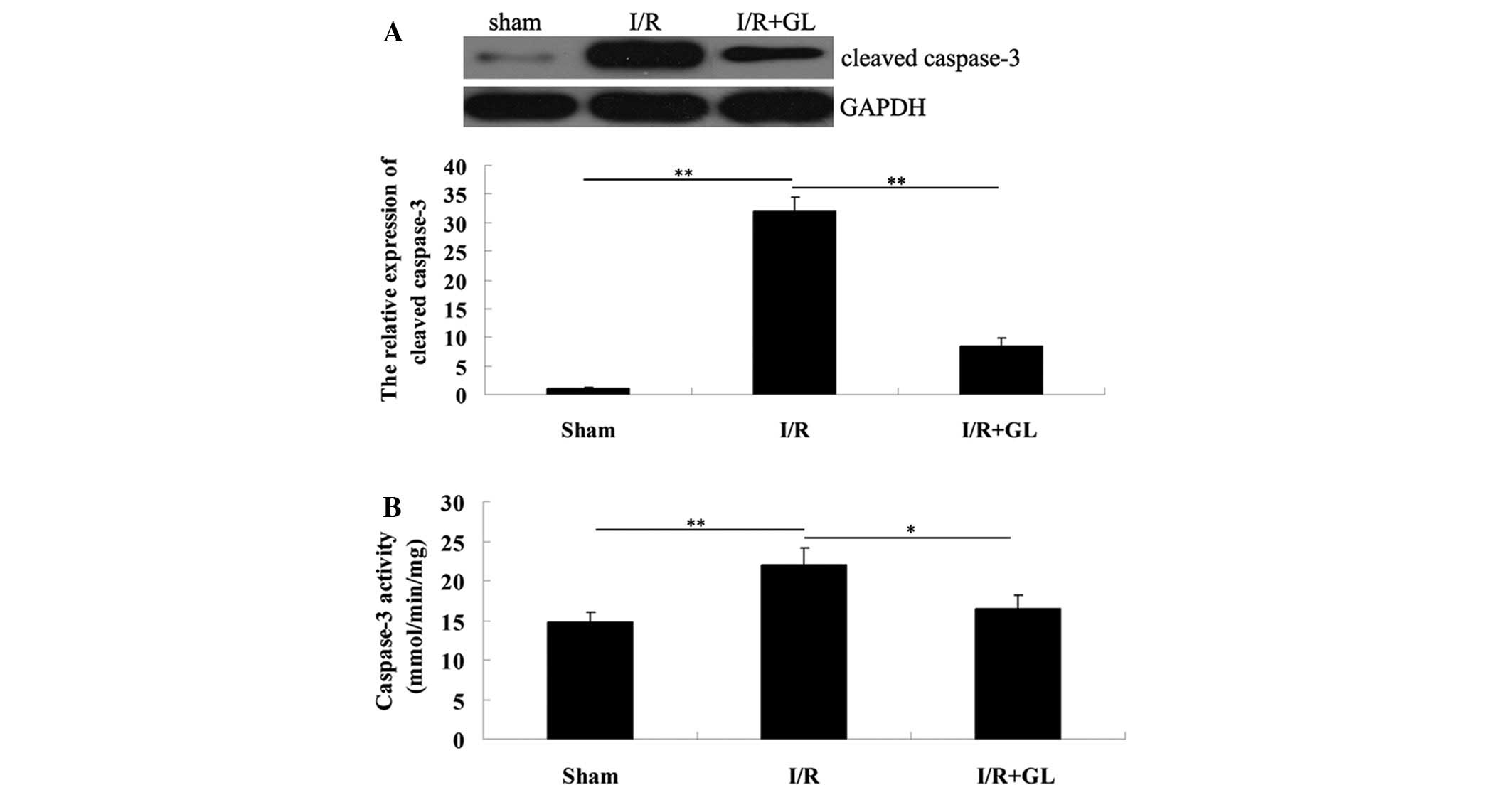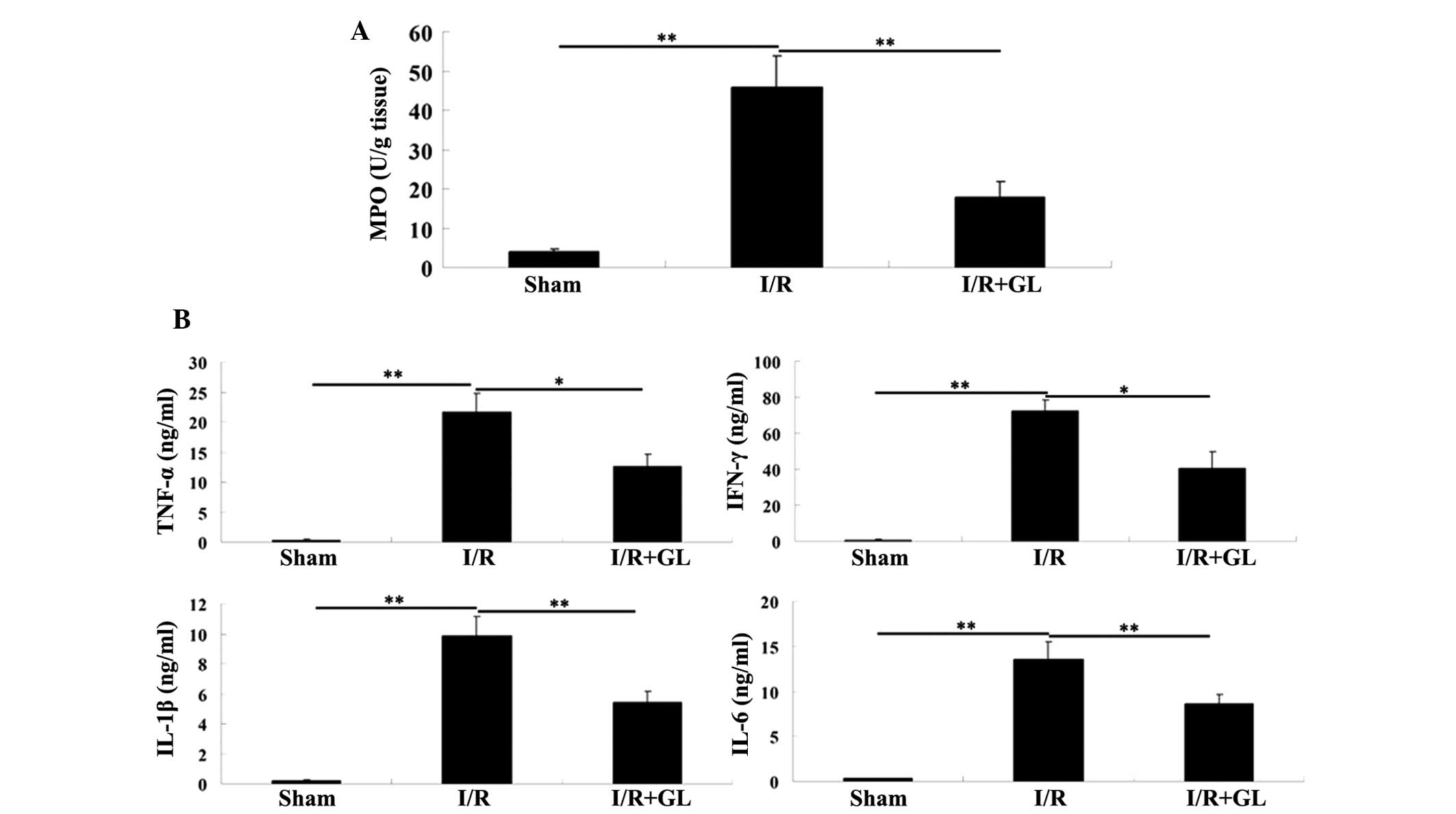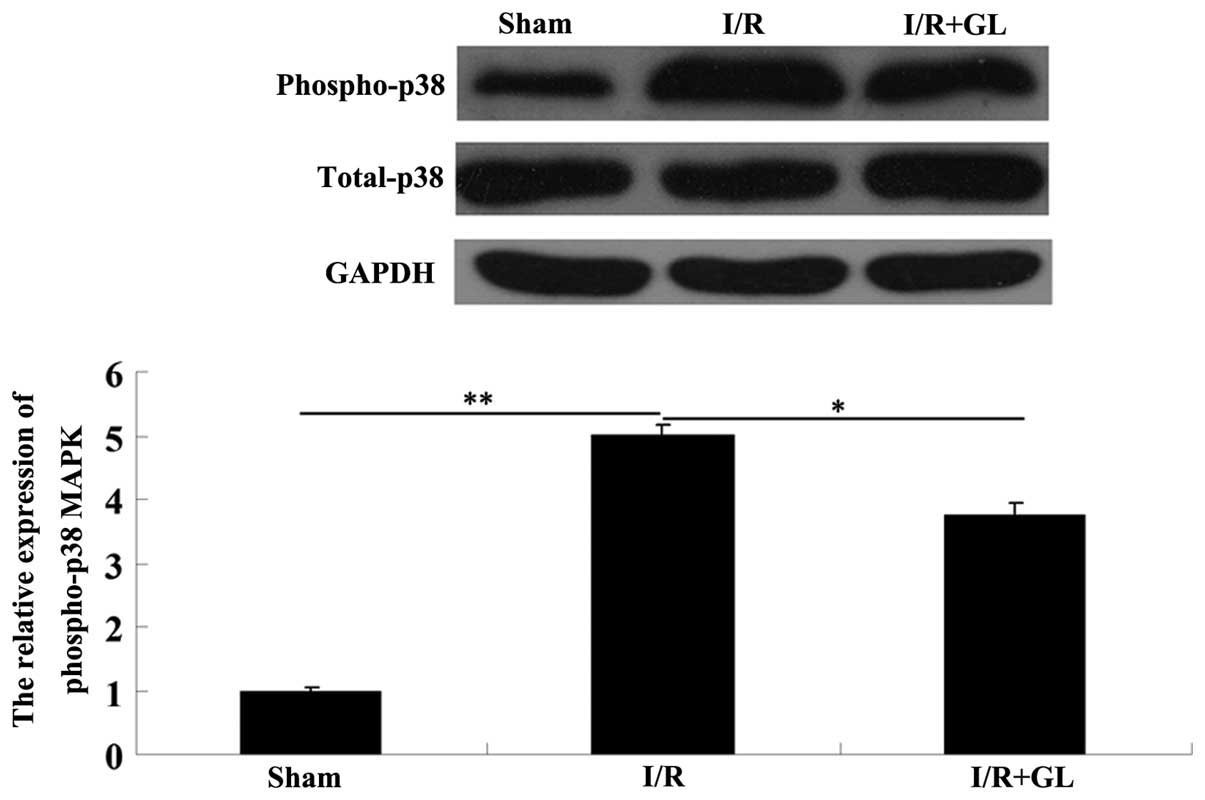|
1
|
Arumugam TV, Shiels IA, Woodruff TM,
Granger DN and Taylor SM: The role of the complement system in
ischemia-reperfusion injury. Shock. 21:401–409. 2004. View Article : Google Scholar : PubMed/NCBI
|
|
2
|
Ichimaru N, Yazawa K and Takahara S:
Kidney transplantation: how shall we deal with marginal cases?
Future prospects from basic research. Hinyokika Kiyo. 56:481–484.
2010.(In Japanese).
|
|
3
|
Versteilen AM, Di Maggio F, Leemreis JR,
Groeneveld AB, Musters RJ and Sipkema P: Molecular mechanisms of
acute renal failure following ischemia/reperfusion. Int J Artif
Organs. 27:1019–1029. 2004.PubMed/NCBI
|
|
4
|
Jin R, Yang G and Li G: Inflammatory
mechanisms in ischemic stroke: role of inflammatory cells. J Leukoc
Biol. 87:779–789. 2010. View Article : Google Scholar : PubMed/NCBI
|
|
5
|
Kupiec-Weglinski JW and Busuttil RW:
Ischemia and reperfusion injury in liver transplantation.
Transplant Proc. 37:1653–1656. 2005. View Article : Google Scholar : PubMed/NCBI
|
|
6
|
De Greef KE, Ysebaert DK, Ghielli M, et
al: Neutrophils and acute ischemia-reperfusion injury. J Nephrol.
11:110–122. 1998.PubMed/NCBI
|
|
7
|
Thurman JM: Triggers of inflammation after
renal ischemia/reperfusion. Clin Immunol. 123:7–13. 2007.
View Article : Google Scholar : PubMed/NCBI
|
|
8
|
Okda FA, Yassein S, Ahmed AR, Soufy H and
Nasr SM: Some haematological and biochemical investigations on duck
virus hepatitis following administration of glycyrrhizin. ISRN
Pharmacol. 2013:8494122013.PubMed/NCBI
|
|
9
|
Di Paola R, Menegazzi M, Mazzon E, et al:
Protective effects of glycyrrhizin in a gut hypoxia
(ischemia)-reoxygenation (reperfusion) model. Intensive Care Med.
35:687–697. 2009.PubMed/NCBI
|
|
10
|
Mabuchi A, Wake K, Marlini M, Watanabe H
and Wheatley AM: Protection by glycyrrhizin against warm
ischemia-reperfusion-induced cellular injury and derangement of the
microcirculatory blood flow in the rat liver. Microcirculation.
16:364–376. 2009. View Article : Google Scholar : PubMed/NCBI
|
|
11
|
Liu L, Zhou HY, Ran K and Wang JB:
Glycyrrhiznatis ameliorates rabbit myocardial ischemia-reperfusion
injury through P38MAPK pathway. Nan Fang Yi Ke Da Xue Xue Bao.
30:298–300. 2010.(In Chinese).
|
|
12
|
Ogiku M, Kono H, Hara M, Tsuchiya M and
Fujii H: Glycyrrhizin prevents liver injury by inhibition of
high-mobility group box 1 production by Kupffer cells after
ischemia-reperfusion in rats. J Pharmacol Exp Ther. 339:93–98.
2011. View Article : Google Scholar : PubMed/NCBI
|
|
13
|
Zhai CL, Zhang MQ, Zhang Y, et al:
Glycyrrhizin protects rat heart against ischemia-reperfusion injury
through blockade of HMGB1-dependent phospho-JNK/Bax pathway. Acta
Pharmacol Sin. 33:1477–1487. 2012. View Article : Google Scholar : PubMed/NCBI
|
|
14
|
Ni B, Cao Z and Liu Y: Glycyrrhizin
protects spinal cord and reduces inflammation in spinal cord
ischemia-reperfusion injury. Int J Neurosci. 123:745–751. 2013.
View Article : Google Scholar : PubMed/NCBI
|
|
15
|
Fang F, Liu GC, Zhou X, et al: Loss of
ACE2 exacerbates murine renal ischemia-reperfusion injury. PLoS
One. 8:e714332013. View Article : Google Scholar : PubMed/NCBI
|
|
16
|
Amura CR, Renner B, Lyubchenko T, Faubel
S, Simonian PL and Thurman JM: Complement activation and toll-like
receptor-2 signaling contribute to cytokine production after renal
ischemia/reperfusion. Mol Immunol. 52:249–257. 2012. View Article : Google Scholar : PubMed/NCBI
|
|
17
|
Wang YP, Li G, Ma LL, et al: Penehyclidine
hydrochloride ameliorates renal ischemia-reperfusion injury in
rats. J Surg Res. 186:390–397. 2014. View Article : Google Scholar : PubMed/NCBI
|
|
18
|
McIlwain DR, Berger T and Mak TW: Caspase
functions in cell death and disease. Cold Spring Harb Perspect
Biol. 5:a0086562013. View Article : Google Scholar : PubMed/NCBI
|
|
19
|
Zhang A, Fu S, Chen L, et al: Lacidipine
attenuates apoptosis via a caspase-3 dependent pathway in human
kidney cells. Cell Physiol Biochem. 32:1040–1049. 2013. View Article : Google Scholar : PubMed/NCBI
|
|
20
|
Daemen MA, de Vries B and Buurman WA:
Apoptosis and inflammation in renal reperfusion injury.
Transplantation. 73:1693–1700. 2002. View Article : Google Scholar : PubMed/NCBI
|
|
21
|
Zhou X, Luo YC, Ji WJ, et al: Modulation
of mononuclear phagocyte inflammatory response by
liposome-encapsulated voltage gated sodium channel inhibitor
ameliorates myocardial ischemia/reperfusion injury in rats. PLoS
One. 8:e743902013. View Article : Google Scholar
|
|
22
|
Ysebaert DK, De Greef KE, Vercauteren SR,
et al: Identification and kinetics of leukocytes after severe
ischaemia/reperfusion renal injury. Nephrol Dial Transplant.
15:1562–1574. 2000. View Article : Google Scholar : PubMed/NCBI
|
|
23
|
Facio FN Jr, Sena AA, Araújo LP, et al:
Annexin 1 mimetic peptide protects against renal
ischemia/reperfusion injury in rats. J Mol Med (Berl). 89:51–63.
2011. View Article : Google Scholar : PubMed/NCBI
|
|
24
|
Bolisetty S and Agarwal A: Neutrophils in
acute kidney injury: not neutral any more. Kidney Int. 75:674–676.
2009. View Article : Google Scholar : PubMed/NCBI
|
|
25
|
Jing XX, Wang ZG, Ran HT, et al:
Evaluation of renal ischemia-reperfusion injury in rabbits using
microbubbles targeted to activated neutrophils. Clin Imaging.
32:178–182. 2008. View Article : Google Scholar : PubMed/NCBI
|
|
26
|
Zhang S, Qi Y, Xu Y, et al: Protective
effect of flavonoid-rich extract from Rosa laevigata Michx
on cerebral ischemia-reperfusion injury through suppression of
apoptosis and inflammation. Neurochem Int. 63:522–532.
2013.PubMed/NCBI
|
|
27
|
Lai EW, Toledo-Pereyra LH, Walsh J,
Lopez-Neblina F and Anaya-Prado R: The role of MAP kinases in
trauma and ischemia-reperfusion. J Invest Surg. 17:45–53. 2004.
View Article : Google Scholar : PubMed/NCBI
|
|
28
|
Khan M, Varadharaj S, Ganesan LP, et al:
C-phycocyanin protects against ischemia-reperfusion injury of heart
through involvement of p38 MAPK and ERK signaling. Am J Physiol
Heart Circ Physiol. 290:H2136–H2145. 2006. View Article : Google Scholar : PubMed/NCBI
|













